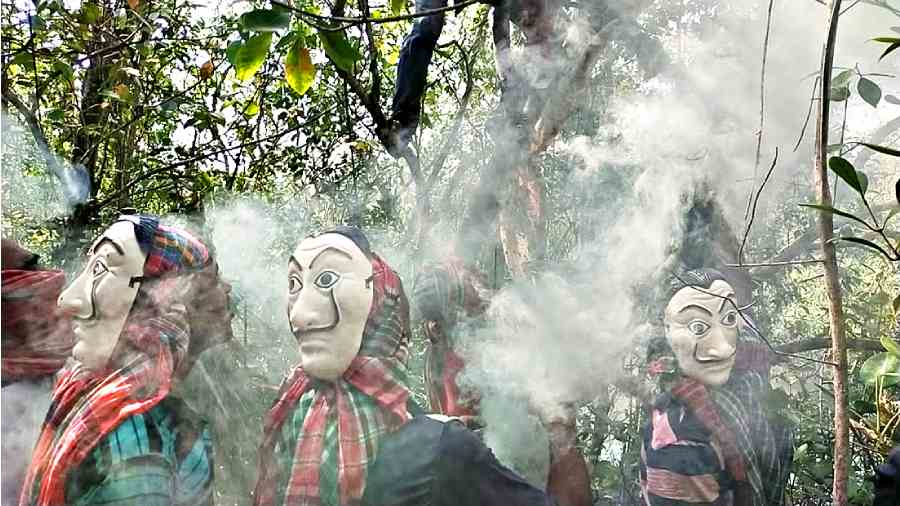Two weeks from now, the forests of the Sunderbans will have a set of visitors in masks but on the back of their heads.
The mangroves are like a maze but these people know the forests like the palm of their hands. They are the honey gatherers of the Sunderbans, locally called moulis.
The moulis must wear masks but on the back of their heads because tigers usually attack from behind.
“This year, honey collection will start from April 7. Around 200 people, split into over two dozen groups, have been granted licences. They will collect honey in the Jhilla forest compartments in Basirhat range. The drive will last for a month,” said Ajay Das, field director of the Sunderban Tiger Reserve (STR).
“The collectors give the honey to the forest department. The honey is refined, packaged and sold by the West Bengal Forest Development Corporation,” said Das.
During the course of the expedition, the moulis eat and sleep on their boats stocked with food, fuel and other essentials. They enter the forest, harvest honey from the beehives and return to the boats.
When the collectors find a suitable spot, they cover their faces with gamchas and prepare a bundle of leaves of mangrove date palms. The bundle is lit. The smoke catches the bees off-guard, thereby reducing the chances of the moulis getting stung.
They then cut combs from the hive. The combs are squeezed to extract the honey.
In 2020, there was massive devastation to the forests because of Cyclone Amphan. The insect population and beehives were not spared either.
In 2021, there were not enough flowers to attract the bees, said an official of the STR. “Last year, the flowering was better,” he said.
Bees that have gathered nectar from the khalsi flower (Aegiceras corniculatum) are believed to be the source of the best honey in the Sunderbans.
Foresters said there are multiple kinds of bees in the mangroves. Among them, the Apis dorsata type makes more hives and honey, according to foresters and biologists.
The honey collectors, picked with the help of joint forest management committees, are from Kumirmari, Kalitala, Shamshernagar and other villages near the buffer zones of STR.
The honey is tested for moisture content and packaged accordingly. For honey with a low moisture content, a group gets Rs 250 a kilo. For honey with relatively higher moisture content, the rate is Rs 225 a kilo, said the official.
The retail price of a 500gm jar of Sunderbans honey is around Rs 400.
Das said the target this year was to collect 20-25 tonnes of honey.
